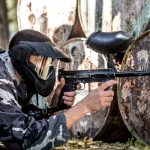Recognising and Addressing Challenges Faced by Left-Handed Footballers
Exploring the hurdles left-handed players face and the importance of understanding these challenges.
Left-handed footballers confront unique challenges in a sport largely tailored to right-handed norms. These challenges for left-handed athletes stem from equipment, field positions, and coaching practices that do not consistently account for their dominant side. For example, many training drills emphasize right-footed maneuvers, creating training barriers that hinder left-handed players’ natural development.
In parallel : Boosting stadium security: key strategies for football clubs to ensure fan safety
Implicit biases also affect left-handed players. Coaches and teammates might unconsciously expect left-handers to adapt to right-handed skills rather than providing equal opportunity in sports from the start. This leads to misunderstandings about left-handers’ capabilities, often pigeonholing them into less optimal roles on the pitch.
Traditional football training methods contribute to these difficulties. Standard drills frequently lack variation or adjustments for handedness, which can slow the growth of key skills for left-handed athletes. By overlooking their requirements, mainstream football inadvertently limits their potential.
Have you seen this : Enhancing football stamina: unleashing the potential of customized periodized training plans
Recognising these barriers is critical for advancing football inclusivity. Addressing them demands awareness, adaptation of training regimes, and fostering an environment where left-handed players receive equal opportunity in sports to shine.
Innovative Solutions and Best Practices for Equal Training Access
Adapting football coaching and training to support left-handed athletes effectively.
Inclusive coaching plays a pivotal role in overcoming the training barriers faced by left-handed footballers. Coaches who embrace equal training opportunities in football recognize the importance of modifying drills to suit left-handed skills. For example, drills that emphasize left-foot control or passing angles help left-handed players develop confidently without unnatural adjustments.
Adaptive training drills are designed to accommodate dominant-hand differences, ensuring that left-handed athletes receive the same quality and focus in their practice as right-handed players. This approach not only improves individual performance but also enhances team dynamics by leveraging left-handed players’ unique strengths.
Providing resources and guidance to coaches about left-handed football support fosters an environment where inclusivity becomes a standard. Workshops, instructional materials, and mentoring can guide coaches in creating balanced training programs and spotting left-handed talent early.
Ambidextrous training models further promote football inclusivity by encouraging players to develop skills with both feet. This is especially beneficial for left-handed players aiming to expand their versatility and adapt to tactical demands.
By implementing these solutions, football training evolves beyond traditional constraints, empowering left-handed athletes with equal opportunity in sports to thrive and push boundaries on the field.
Practical Strategies for Clubs, Coaches, and Sports Organizations
Clubs and coaches play a crucial role in promoting football inclusivity by adopting tailored coaching techniques that recognize the needs of left-handed players. To effectively support left-handed athletes, coaching strategies must be flexible and personalized, focusing on skill development that aligns with each player’s dominant side. This customization helps overcome training barriers by emphasizing strengths rather than forcing adaptation to right-sided norms.
Sports organizations should assess current infrastructure and training programs to identify gaps in resources for left-handed players. Ensuring availability of appropriate equipment and creating spaces that accommodate varied playing styles reinforce equal opportunity in sports. Additionally, facility layouts and team formations can be optimized to maximize left-handed athletes’ impact on the game.
Establishing clear policies that prioritize supporting left-handed players solidifies a culture of inclusivity. Such policies can mandate ongoing coach education on handedness differences and require regular evaluation of talent development programs for balance and fairness. Structured initiatives empower both athletes and staff to embrace diversity actively.
Incorporating these strategies elevates not just individual performance but also overall team effectiveness. Through comprehensive efforts, clubs and organizations can nurture left-handed talent, ensuring a level playing field and enriching the sport with diverse skills and perspectives.
Recognising and Addressing Challenges Faced by Left-Handed Footballers
Left-handed footballers face distinct challenges for left-handed athletes rooted in the right-dominant culture of mainstream football. One major obstacle is how training barriers arise from drills and tactics primarily designed for right-footed or right-handed players. This often forces left-handed athletes into unnatural positions or styles, limiting their natural skill development and affecting confidence.
Implicit biases further compound difficulties. Coaches and teammates may unconsciously assume left-handers should simply adapt, undermining the need for tailored support. These challenges for left-handed athletes foster misconceptions that left-handed players are less versatile or capable, restricting their opportunities.
Traditional football training methods rarely account for handedness differences. Standardized drills typically overlook the nuances of controlling or passing with the left side, which delays left-handed players’ technical progress. Without awareness and adjustment, football inclusivity cannot be fully realized.
Recognizing these barriers is essential to promote equal opportunity in sports. Overcoming these obstacles requires a fundamental shift in coaching mindset, aiming to actively dismantle training barriers and foster an inclusive environment that respects and integrates left-handed skillsets. This ensures left-handers can develop on equal terms with right-handed players, ultimately enriching the sport.




